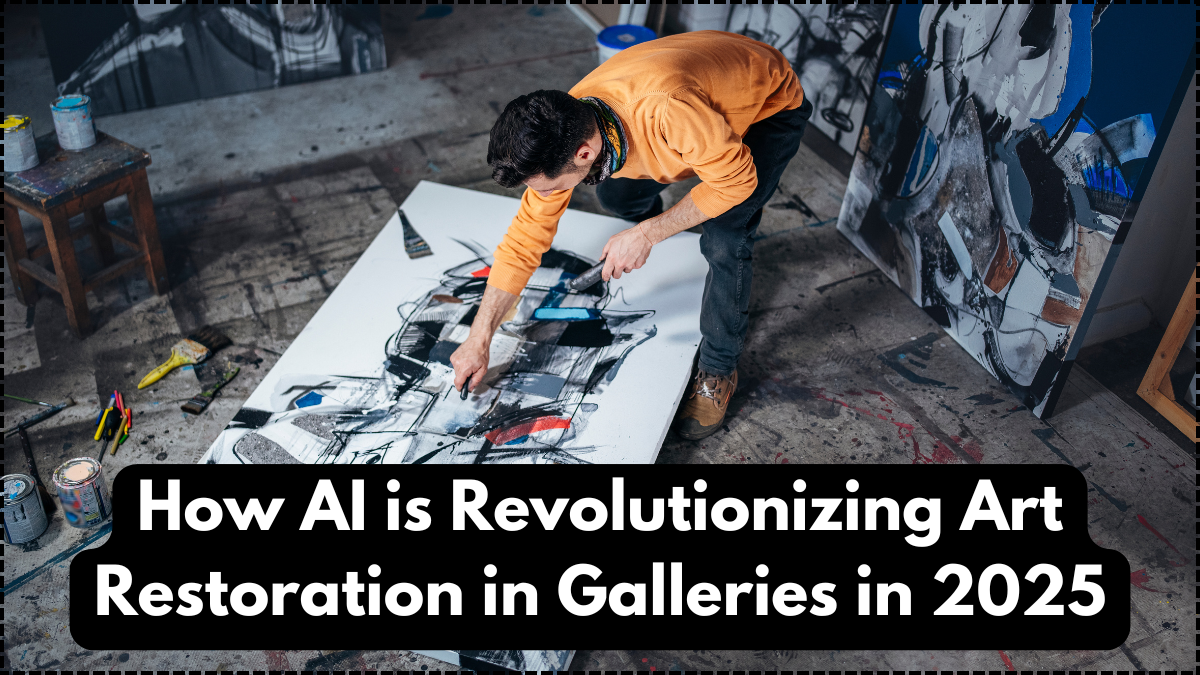Art restoration has always been a delicate balance between science and creativity. Every brushstroke, pigment, and texture holds history, and restoring that heritage takes precision and expertise. In 2025, AI in art restoration is reshaping how galleries, museums, and experts care for priceless artworks. Through advanced imaging, machine learning, and predictive modeling, AI is speeding up restoration while maintaining accuracy. This evolution is part of a broader wave known as art conservation 2025, which combines cutting-edge tech with timeless craftsmanship.

Why AI Matters for Art Conservation
Restoring art is complex—it’s not just about cleaning dust or repairing cracks. Experts must understand original techniques, materials, and even the environmental history of the piece. Traditional methods take years, but AI in art restoration changes the process. By analyzing thousands of high-resolution images, AI can identify damage patterns, color fading, and even the type of materials used centuries ago. This helps shape the new era of art conservation 2025, making restorations faster and more precise.
How AI Works in Art Restoration
The introduction of AI brings tools that were unimaginable a decade ago. With AI in art restoration, software can scan a painting and recreate missing sections digitally before any physical work is done. Some systems even use historical references to predict how original pigments would have looked when freshly painted.
Key AI-driven processes in art conservation 2025 include:
-
High-resolution scanning to detect micro-cracks and faded details
-
Color prediction models to restore original hues
-
Digital previews of restoration before applying changes to the artwork
-
Automated suggestions for suitable materials and techniques for repair
Table of AI Tools Supporting Art Conservation 2025
Here’s a quick overview of how technology is transforming the field:
AI Tool/Technique |
Contribution to Art Restoration |
|---|---|
AI Color Mapping |
Predicts original shades and pigments |
Neural Imaging Systems |
Detects hidden details beneath layers |
Digital Restoration Platforms |
Creates previews of restored art |
Machine Learning Archives |
Matches artwork to historical data |
Impact on Galleries and Cultural Heritage
For galleries and museums, AI in art restoration isn’t just a convenience—it’s a breakthrough. Priceless works that once took decades to restore can now be assessed in months. Art conservation 2025 means more masterpieces can be preserved, more exhibitions can display fully restored works, and fewer errors occur in the restoration process. This technology also helps safeguard cultural heritage by documenting every step for future generations.
Conclusion
The integration of AI in art restoration marks a new era for galleries and cultural institutions. Through the innovations of art conservation 2025, priceless masterpieces can be studied, restored, and protected with unprecedented precision. This is not a replacement for skilled restorers—it’s a partnership between human expertise and intelligent technology that ensures art will continue to inspire for centuries to come.
FAQs
How is AI used in art restoration?
AI in art restoration analyzes images, predicts colors, and provides digital previews to guide accurate restoration work.
What is art conservation 2025?
Art conservation 2025 is the modern approach to preserving and restoring artworks, combining traditional methods with AI and technology.
Does AI replace human restorers?
No—AI supports experts by offering data and suggestions, but the artistry and final work still rely on human skill.
Can AI really predict original colors in paintings?
Yes, AI uses historical references and pigment analysis to estimate how colors appeared when first applied.
Why is AI important for galleries and museums?
It speeds up restoration, reduces errors, and helps preserve more artworks as part of art conservation 2025.
Click here to learn more